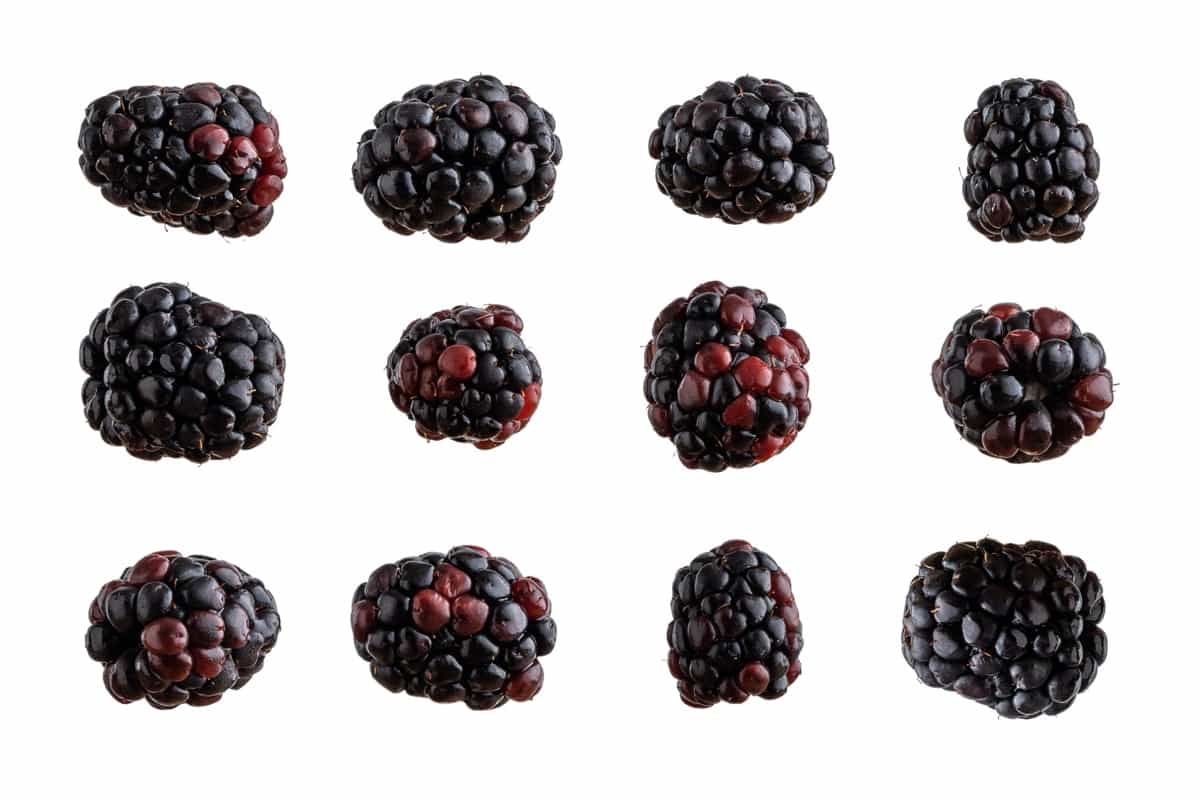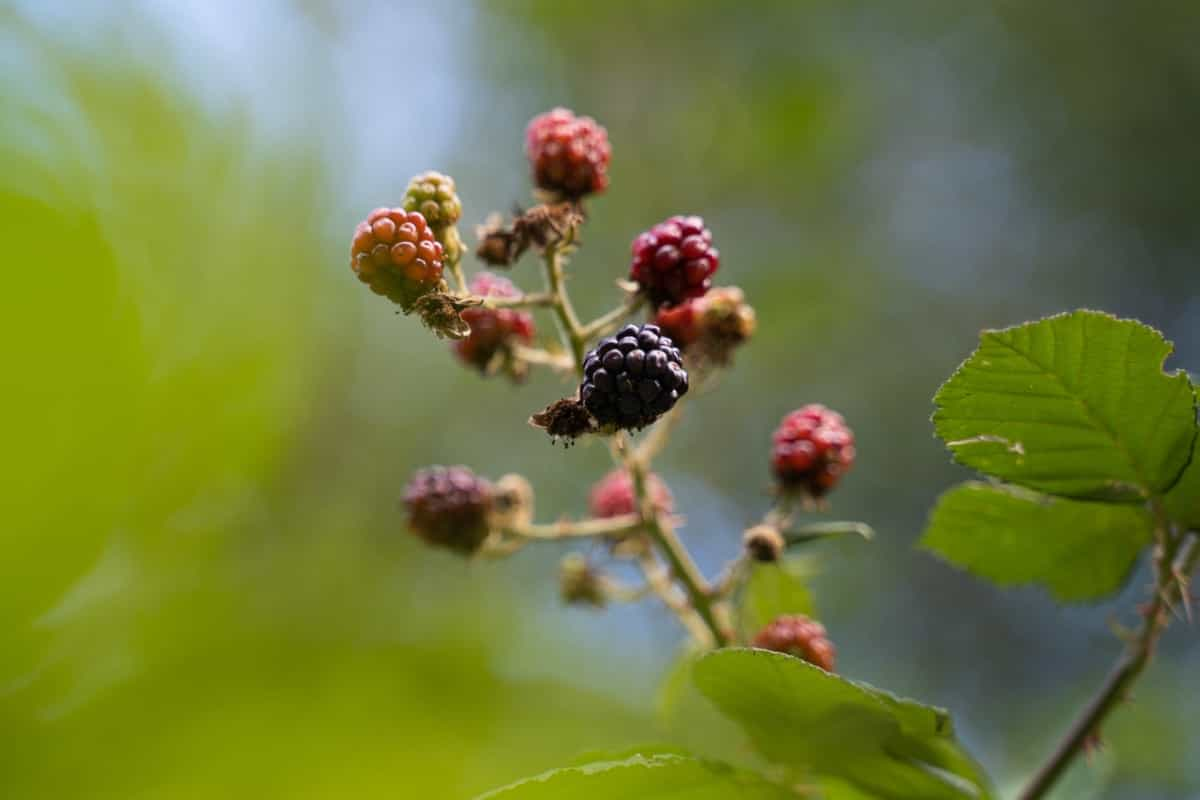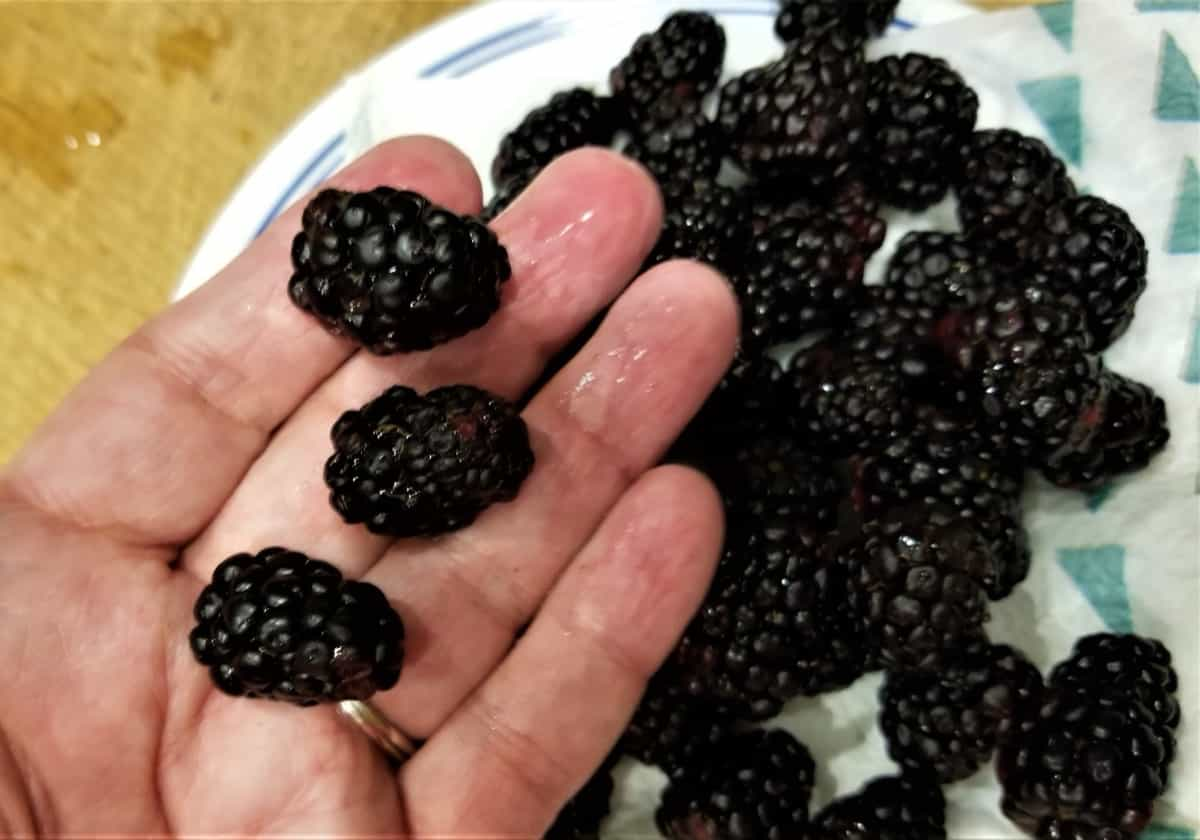One of the greatest benefits of Boysenberry Container Gardening is its flexibility. You can grow boysenberries in pots regardless of the size or type of outdoor space you have available. Growing boysenberries in containers allows you to maximize your growing area by utilizing vertical space.

How to Grow Boysenberries in a Pot
Overview of Boysenberry Plants
Boysenberry plants are vigorous growers that can reach heights of 5 to 6 feet. They have long trailing canes with thorny stems that require support as they grow. These plants also produce large clusters of berries that ripen from green to deep purple or maroon when fully matured. When choosing boysenberry cultivars for container growth, consider varieties specifically bred for compact growth and suitability for pots.
Choosing the Right Variety for Pots
Selecting Boysenberry Cultivars
When it comes to growing boysenberries in pots, selecting the Best Boysenberry Varieties for Pots is crucial for success. Think about the climate and growing conditions in your area. Some boysenberry cultivars are more suited to specific climates, so choose one that will thrive in your region. Next, think about the size of your pot and how much space you have available.
Considerations for Container Growth
First and foremost, selecting the ideal container is crucial for the success of your plants. For boysenberries, choose a pot that is 18 inches deep and wide enough to accommodate their sprawling nature. Proper drainage and airflow are also essential factors to consider when growing boysenberries in containers. Use well-draining soil mix with good moisture retention properties while avoiding heavy clay-based soils that tend to retain excess water.
Selecting the Ideal Container
Size and Material of Pots
Boysenberry plants have vigorous growth habits, so you’ll want to provide them with enough space to spread their roots. A general rule of thumb is to use a pot with a diameter of 18 inches. As for material, clay or terracotta pots are the best choices due to their ability to absorb excess moisture and allow airflow through the walls. If you prefer lightweight options, consider using plastic or fabric containers.
Drainage and Airflow Requirements
Drainage and airflow are crucial factors to consider when growing boysenberries in pots. To ensure proper drainage, choose a pot with drainage holes at the bottom. This allows water to flow out freely and prevents it from pooling around the roots. To promote good airflow around your boysenberry plants, avoid overcrowding them in one pot. Leave enough space between each plant so that air can circulate freely.
Preparing the Soil and Pot
Soil Composition for Boysenberries
The right soil composition is crucial for the successful growth of boysenberry plants in containers. To create the perfect soil mix, start with a base of high-quality potting mix or garden soil. Avoid using heavy clay soils as they can restrict drainage and lead to waterlogged roots.
Mix in organic matter such as compost or aged manure to improve fertility and moisture retention. Boysenberries prefer slightly acidic soil with a pH range between 6.0 and 6.5. You can adjust the pH level by adding amendments like sulfur or lime if necessary, but it’s best to test your soil before making any adjustments.
Setting Up Your Container
Setting up your container is a crucial step in successfully growing boysenberries. It ensures that your plants have the right conditions to thrive and produce delicious berries. Selecting the ideal container for your boysenberries is essential. Consider choosing a pot that is large enough to accommodate the plant’s root system and allows room for growth. Speaking of drainage, it is vital to ensure proper airflow and water drainage in the container.
In case you missed it: How to Get More Potatoes Per Plant: 11 Potato Growth Hacks for a High Yield

Planting Boysenberry Plants
Timing and Method of Planting
When it comes to the Potting Boysenberries Guide, timing is crucial for successful planting. The best time to plant boysenberry plants in containers is during the early spring or late fall when temperatures are mild. Before planting, make sure you have a well-draining potting mix ready. Fill your chosen container with this nutrient-rich soil, leaving about an inch of space from the top for watering purposes.
Next, carefully remove your boysenberry plant from its nursery container and gently loosen any tangled roots. Place the root ball into your prepared pot, making sure that it sits at the same level as it did in its original container. Once you’ve positioned your plant, backfill with additional potting mix until it reaches just below the rim of the container. Press down lightly around the base of the plant to secure it in place.
Initial Care Post-Planting
First and foremost, water is essential for newly planted boysenberries. Water deeply and thoroughly when needed, allowing excess water to drain out of the pot. In addition to adequate watering, feeding your boysenberries is crucial during this stage. Apply a slow-release fertilizer or organic compost around the base of each plant, following package instructions for application rates. Regular inspection of your plants is also important post-planting.
Watering and Feeding Boysenberries
Watering Schedule for Container Plants
In general, containers dry out faster than garden beds, so regular monitoring is essential. As a general rule of thumb, it’s better to water deeply but less frequently rather than shallowly and often.
Fertilization Needs and Schedule
Fertilizing Potted Boysenberry Plants is an essential aspect of Boysenberry Plant Care in Containers. These plants need a steady supply of nutrients to thrive and produce abundant fruit. To meet their fertilization needs, it’s important to establish a proper schedule and choose the right type of fertilizer. Boysenberry plants benefit from regular feeding throughout the growing season. Start by applying a balanced, slow-release fertilizer when planting your boysenberries in containers. This will provide them with initial nutrition to establish strong roots.
Pruning and Training
Pruning for Health and Productivity
When it comes to Pruning Container-Grown Boysenberries, there are a few key considerations to keep in mind. Remove any dead or damaged canes regularly throughout the growing season. These canes not only detract from the overall appearance but may also harbor disease or pests. In addition to removing dead wood, thinning out overcrowded canes is essential for maximizing fruit production. Aim for about 3-4 strong canes per container, cutting back weaker growth at ground level.
Training Boysenberries in Containers
As the boysenberry plants grow, gently guide their vines along the trellis, using plant ties or soft twine to secure them if necessary. It’s important to train the vines horizontally along the trellis, as this encourages more fruit production.
Pest and Disease Management
Common Pests and Diseases
One common pest that may plague your boysenberry plants is the aphid. To combat aphids, regularly inspect your plants for signs of infestation and use natural remedies such as insecticidal soap or neem oil. Another pesky critter that may bother your boysenberries is the spider mite. Regularly spraying water on your plants can help deter spider mites. In terms of diseases, gray mold (botrytis) can be a concern for boysenberries grown in containers.
In case you missed it: 9 Best Berries to Grow in Containers: Well Explained in Simple Steps

This fungal disease thrives in moist conditions and causes brown spots on berries and fuzzy gray growth on plant parts. To prevent botrytis, avoid overwatering and ensure good air circulation around your pots. Root rot is another potential issue for container-grown boysenberries if there’s excessive moisture or poor drainage in their potting mix. Avoid waterlogged soil by providing adequate drainage holes in your containers.
Prevention and Treatment Strategies
One effective prevention strategy is regular inspection of your plants. By closely monitoring for signs of pests or diseases, you can catch potential problems early on. Remove any affected leaves or berries promptly to prevent further spread. Another preventive measure is practicing good hygiene in your garden area. Clean up fallen leaves, weeds, and debris regularly, as they can harbor pests and diseases.
Winter Care and Overwintering
Protecting Plants in Colder Months
Overwintering Boysenberries in Containers can be done by adding mulch around the plant. Mulch acts as a barrier against extreme temperatures, helping to regulate soil temperature and prevent frost from penetrating deep into the roots. Another important aspect to consider is providing shelter for your boysenberry plants.
Winter Pruning and Maintenance
Start by removing any dead or damaged canes, as well as those that are crossing or overcrowding each other. This opens the plant to better airflow and sunlight penetration, reducing the risk of disease. Next, trim back the remaining canes to about 12-18 inches above ground level. To protect your plants during frosty nights, consider covering them with breathable fabric or mulch. This insulation will shield them from extreme cold while allowing air circulation.
Harvesting and Propagation
Signs of Ripeness and Harvesting Techniques
Boysenberries should have a deep, dark purple color when fully ripe. Avoid harvesting them when they’re still red or green, as they won’t be as flavorful. Gently touch the berries to check their firmness. Ripe boysenberries should be plump and slightly soft, giving a little under gentle pressure. The best way to determine ripeness is by tasting a few berries. If they’re sweet with a hint of tartness, it’s time to harvest.
To Harvest Boysenberries from Pots, simply grasp the berry between your thumb and forefinger and give it a gentle twist. Ripe berries will detach easily from the stem. It’s important not to pull on the fruit forcefully, as this can damage both the berry and the plant itself. To avoid any bruising or crushing during transport, place harvested boysenberries into shallow containers rather than stacking them on top of each other.
Propagating Boysenberries from Container Plants
To propagate Boysenberries, you have a few options. One method is by taking stem cuttings from the mother plant. Simply select a healthy, vigorous stem and cut it. Remove any leaves on the lower half of the cutting and dip them in rooting hormone before planting them in a small pot filled with moist soil mix. Another way to propagate boysenberries is through layering. This involves bending one of the long stems down towards the soil surface and covering part of it with soil or compost.
After some time, roots will form along this buried portion, allowing you to separate it from the mother plant and transplant it into its container. You can also propagate boysenberries by division. As these plants grow, they naturally produce multiple crowns or clumps connected by underground runners. To divide them, carefully dig up the entire plant and separate these clumps into individual sections using clean pruning shears.
In case you missed it: Discover the Top 13 Blueberry Varieties for Your Home Garden

Conclusion
Growing boysenberries in a pot is not only practical but also rewarding. It allows you to experience the joy of gardening regardless of space constraints while reaping all the benefits that come with cultivating these tasty berries at home.
- How to Grow Hibiscus from Flower
- Plantation Ideas for Home Decoration: A Beginners Guide
- Flower Garden Designs and Layouts for Beginners
- Planting and Spacing Techniques in Papaya: A Beginner’s Guide
- Growing Gold: Essential Techniques for Planting Pineapples
- How to Make Kalanchoe Plant Bushy: Home Remedies and Solutions
- 11 Reasons Why Your Gardenia is Not Blooming: Home Remedies and Solutions
- Eco Elegance: The Guide to Designing a Drought-Tolerant Landscape
- Gardening on a Slope: Strategies for Hillside Landscaping